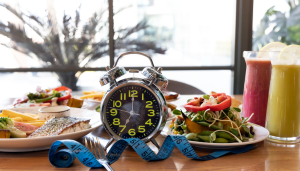Hypertension is often addressed to as a silent killer. It rarely shows symptoms. Elevated Blood Pressure is an indicator that it’s time we assess our lifestyle and modify it for good. An increase in the awareness of the causes and effects of Hypertension is one of the key to motivate people to monitoring their blood pressure regularly and keeping it in check.
Rates of systolic blood pressure ≥140 mm Hg have increased globally in the past 25 years, as have the associated rates of death and disability. (Source: The Worldwide Burden of Hypertension, Harlan M. Krumholz et al. JAMA 2017 Jan 10.) It was found that, that the number of people with systolic blood pressure (SBP) of 140 mm Hg or higher was estimated to have increased from 442 million in 1990 to 874 million in 2015. The rate of hypertension increased from 17,307 per 100,000 in 1990 to 20,525 per 100,000 in 2015.
What is Hypertension?
Hypertension is abnormally high blood pressure. Blood pressure is the pressure exerted by the blood against the walls of your arteries while flowing. Blood pressure readings have two numbers, for example 130/80mmHg. The upper number is your systolic blood pressure (It indicates how much pressure the blood is exerting when the heart beats). The lower number is your diastolic blood pressure. (It indicates how much pressure the blood is exerting when your heart relaxes between beats.) The blood pressure value of 120/80 mm Hg is considered normal, a value below 90/60 mmHg is considered hypotension (low blood pressure) and a value above 140/90 mm Hg is considered hypertension (high blood pressure).
What are the types of Hypertension?
There are two types of hypertension,
- Primary (Essential Hypertension) – which does not have an identifiable cause and could develop gradually over years
- Secondary Hypertension – could be because of an underlying condition like thyroid disorder, kidney disease, certain medicines, adrenal tumor etc
What are the risk factors of Hypertension?
(A) MODIFIABLE RISK FACTORS –
1. Being Obese
2. Addiction – High alcohol intake / Smoking
3. Stress– Personal/ Family/Work related
4. High blood cholesterol
5. Faulty dietary habits – high salt intake or too little potassium intake
6. Lack of physical activity
(B) NON-MODIFIABLE RISK FACTORS –
1. Age
2. Ethnicity / Race
3. Family history of hypertension/ heart disease
Sometimes pregnancy too can cause hypertension

What are the symptoms of Hypertension?
1. Headache
2. Shortness of Breath
3. Dizziness & drowsiness
4. Fainting & fatigue
5. Profuse sweating
6. Epistaxis (nose bleeding)
7. Palpitation & uneasiness
8. Blurred or double vision
9. Nausea & vomiting
What you can do to control Hypertension?
1. Maintain optimal weight, weight should be in proportion to your height and gender
2. Exercise regularly, aim for 150 minutes of moderate physical activity in a week (around 30 minutes a day, 5 days a week)
3. Stop smoking.
4. Reduce your caffeine intake.
5. Avoid excessive alcohol intake.
6. Manage stress by trying meditation, yoga/pranayam, muscle relaxation techniques. Getting adequate sleep too contributes. Destress by being socially and physically active.
Adopt a healthy eating lifestyle. Eat plenty of fresh fruits and vegetables every day. Cut down on table salt intake. Avoid processed and preserved foods. Reduce your fat and sugar intake. Check the label before purchasing any packaged food



